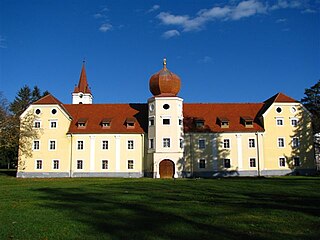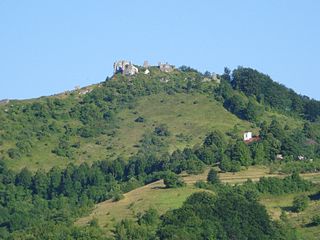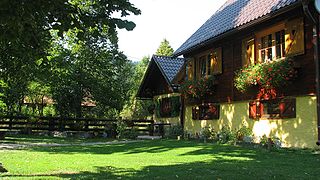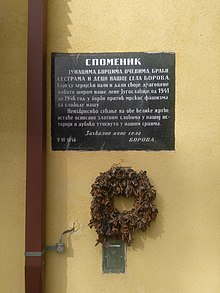
Krapina-Zagorje County is a county in northern Croatia, bordering Slovenia. It encompasses most of the historic region called Hrvatsko Zagorje.

Požega-Slavonia County is a Croatian county in western Slavonia. Its capital is Požega. Its population was 78,034 at the 2011 census.

Sniježnica is a mountain located in the southernmost part of Croatia, north of the Konavle region. The eponymous highest peak is 1,234 metres (4,049 ft).

Drvenik Veli is an island in Croatian part of Adriatic Sea. It is situated in the middle of the Dalmatian archipelago, northwest of Šolta, 1.8 kilometres from the mainland. Its area is 12.07 square kilometres (4.66 sq mi). The highest peak is 178 metres high. The only settlement on the island is the near-eponymous village of Drvenik Veliki with a population of 150.

Drvenik Mali (also called Ploča by local population; is an island in Croatian part of Adriatic Sea. It is situated in middle-Dalmatian archipelago, west of Drvenik Veliki, 8 nautical miles from Trogir. Its area is 3.43 square kilometres. The only settlement on the island is the eponymous village with a population of 87. The coast is well indented and sea around the island is shallow, thus convenient for fishing. The highest peak is 79 metres high. Main industries are agriculture, fishing and tourism.

The Velika Kapela is a large mountain range in the east of Gorski Kotar, Croatia.

Begovo Razdolje is a village in Mrkopalj municipality, Primorje-Gorski Kotar County, Croatia. At 1,060 m (3,478 ft), it is the settlement with the highest elevation in Croatia.

Vitaljina is a village in Croatia. Connected by the D516 highway, it is the southernmost settlement in mainland Croatia Administratively Vitaljina belongs to the municipality of Konavle, Dubrovnik-Neretva County, and is located in between the Adriatic Sea and Montenegro.
Ivanščica or Ivančica is a mountain in northern Croatia. The highest peak is the eponymous Ivanščica at 1,059 metres (3,474 ft).
Viševica is a mountain in Gorski Kotar, Croatia. Its highest peak is the eponymous Viševica at 1,428 m.a.s.l.

Bitoraj is a mountain in Gorski Kotar, Croatia. It is variously defined as a standalone mountain or as group of peaks of Velika Kapela. The highest peaks on it are Burni Bitoraj at 1,386 m.a.s.l., Velika Javornica at 1374 m.a.s.l., and the eponymous Bitoraj peak at 1,140 m.a.s.l.

Tuhobić is a mountain in Gorski Kotar, Croatia. Its highest peaks are at 1,109 and 1,106 m.a.s.l.
Šibenik is a mountain in inland Dalmatia, Croatia. Its highest peak is Veliki Šibenik at 1,314 m.a.s.l. It is located west of Vrgorac and east of Biokovo.

Lake Krušćica is an artificial lake located in Kosinj, Lika, Croatia. It is administratively divided between the municipalities of Gospić and Perušić of the Lika-Senj County. The total lake area is 3.9 square kilometres (1.5 sq mi), while its elevation is 554 m.a.s.l.

Kalnik or Kalničko gorje is a mountain in northwestern Croatia. Its highest peak is the eponymous Kalnik at 642 metres (2,106 ft).
Gacko Polje is a polje in the Lika region of Croatia, the third largest in Croatia, covering an area of 80 square kilometres (31 sq mi).
Imotsko Polje is a polje located on the border of Croatia and Bosnia and Herzegovina near the city of Imotski. The larger part is in Herzegovina, while the Croatian part is in the inner Dalmatia region, and is the second largest in the country, covering an area of 95 square kilometres (37 sq mi).
Sinjsko Polje is a polje in the inner Dalmatia region of Croatia, the fifth largest in Croatia, covering an area of 64 square kilometres (25 sq mi).














